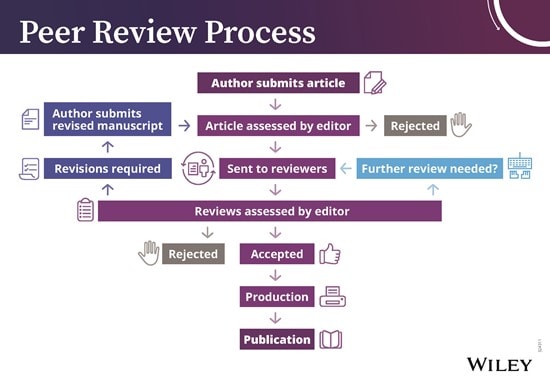Assignment Guidelines:
Submission Details:
The assignment should be typed in 12-point Times New Roman, double-spaced, and include a title page.
Students are tasked with curating a virtual exhibition that explores the theme of identity. The exhibition will act as a visual essay, using a cohesive collection of artifacts to address a specific research question and support a central thesis.
 Scholarly vs. Popular Sources
Scholarly vs. Popular SourcesA scholarly publication features articles written by experts for other experts. These are often called "peer-reviewed," "academic," or "refereed" journals. This means that before an article is published, it is reviewed by other scholars in the same field to ensure the research and findings are reliable.
|
|
Scholarly / Peer-Reviewed |
Popular / Not Scholarly (but possibly still credible!) |
Author |
|
|
Review Process |
|
|
Audience /
|
|
|
Content |
|
|
Sources |
|
|
Examples |
|
|
 The Peer Review Process
The Peer Review ProcessResource: "The Peer Review Process" - Wiley Publishing

(Source: Wiley, Wiley Author Services, n.d.)
 One method for evaluating source quality is by using RADAR
One method for evaluating source quality is by using RADAR
Relevance |
|
Authority |
|
Date |
|
Accuracy |
|
Reason (for Creation) |
|
(Source: SAIT)
Open the links for each source.
Review each one, focusing on the publication type, author’s background, and overall credibility.
Answer the following questions for each source, using the Google Form
Head to the MRU Library citation guides to get guidance on paper formatting and referencing sources.
When conducting research, it's essential to use high-quality, properly licensed images. Below are resources and links to help you find images through our library and the web.
MRU Library Search
Use the main library search to find books, articles, and images from a wide range of databases. This is a great starting point to find images that may be embedded within articles or books.
Image Databases at MRU
Explore specialized databases dedicated to images, including visual art, historical photographs, and multimedia collections.
Flickr Creative Commons
Find images offered under Creative Commons licenses, which allow for different levels of use and adaptation.
Wikimedia Commons
Search for freely usable media files, including images, videos, and sound recordings.
Pexels
Browse a collection of high-quality stock photos that are free to use for both personal and commercial purposes.
Tineye
Upload an image or paste a URL to find similar images across the web. Useful for tracing the original source or finding additional context.
Google Images Search
Use Google’s image search to find high-profile images, but be sure to check the usage rights to avoid copyright issues.
Glenbow Western Research Centre
Explore the Glenbow’s extensive photographs collection focusing on Western Canada, available through the Archives.
Alberta on Record
Search for digital materials, including images, from the Archives Society of Alberta’s online portal.
Library & Archives Canada Image Search
Access photographs, drawings, maps, and artwork from Canada's national library and archives.